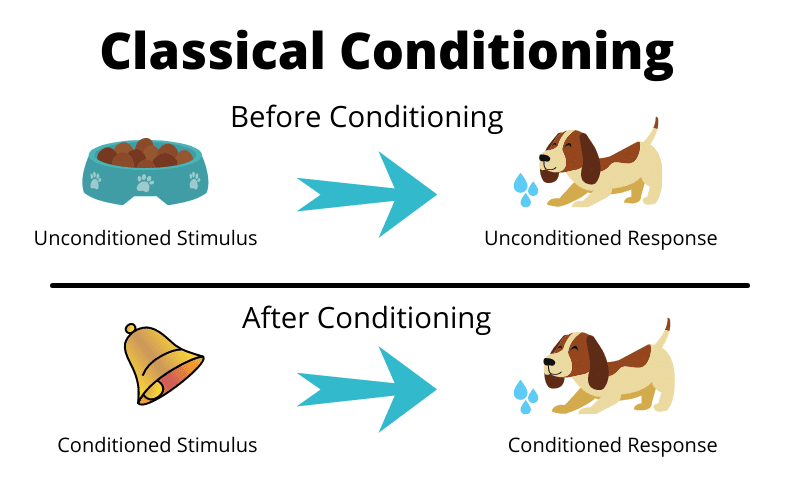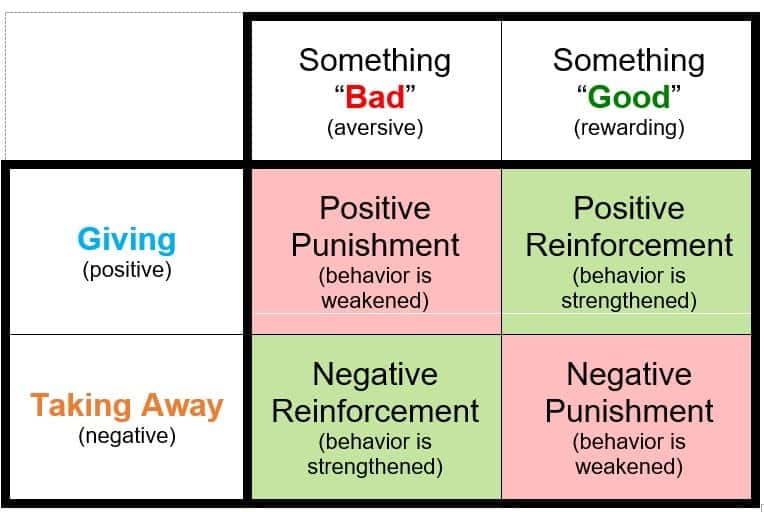classical conditioning, how dogs learn, learning theory, operant conditioning
How Dogs Learn
How Dogs Learn
By Will Bangura, M.S., CBCC-KA, CPDT-KA, (Dog Behaviorist), Certified Dog Behavior Consultant.
Dogs are highly intelligent creatures that can learn through a variety of methods. They can be trained to perform various tasks and behaviors, including obedience commands, tricks, and even therapy work. To understand how dogs learn, it is important to understand two key learning theories: classical conditioning and operant conditioning.
How Dogs Learn by Classical Conditioning or Associative Learning
The Russian psychologist Ivan Pavlov introduced classical conditioning as a learning theory. It is based on the idea that a neutral stimulus, when paired with a meaningful stimulus, will come to elicit a response on its own. For example, suppose a dog is repeatedly exposed to the sound of a bell ringing immediately before being fed. In that case, eventually, the sound of the bell alone will elicit the dog’s salivation response. This is because the dog has learned to associate the sound of the bell with the presence of food.
Classical conditioning can be applied in many ways when training dogs. For example, it can be used to help dogs overcome fears or aggression. Suppose a dog is fearful of a particular object or situation. In that case, exposure to the object or situation can be paired with a positive experience, such as treats or praise, to help the dog overcome their fear. By consistently pairing the object or situation with a positive experience, the dog will eventually come to associate the object or situation with something positive, and their fear will be reduced.
Another example of classical conditioning in dog training is the use of clicker training. In clicker training, a clicker marks the precise moment that a desired behavior is performed. The click is then paired with a reward, such as a treat or praise, to reinforce the behavior. Over time, the dog will learn to associate the clicker’s sound with a reward and will work to repeat the behavior to receive a reward.
A third example of classical conditioning in dog training is the use of a conditioned emotional response (CER). A CER is a learned response to a specific stimulus that has been paired with a positive or negative experience. For example, suppose a dog is repeatedly exposed to a particular sound, such as the sound of a horn, immediately before receiving a treat. In that case, the sound of the horn alone will come to elicit a positive response, such as a wagging tail or jumping. This is because the dog has learned to associate the sound with the presence of a treat.
How Dogs Learn by Operant Conditioning or Instrumental Learning.
Operant conditioning is another learning theory that is often used in dog training. Unlike classical conditioning, which is based on the idea of pairing a neutral stimulus with a meaningful stimulus, operant conditioning is based on the idea that behavior is shaped by the consequences that follow it. For example, if a dog performs a desired behavior and is then rewarded, the behavior is more likely to be repeated in the future. Conversely, if a dog performs an undesired behavior and is punished, the behavior is less likely to be repeated in the future.
Operant conditioning can be used in many ways in dog training. For example, it can be used to teach obedience commands. If a dog performs a desired behavior, such as sitting on command, and is then rewarded with a treat or praise, the behavior is more likely to be repeated in the future. Conversely, if a dog performs an undesired behavior, such as jumping on people, and is punished, the behavior is less likely to be repeated in the future.
Operant Conditioning
Another example of operant conditioning in dog training is the use of positive reinforcement. Positive reinforcement is a type of operant conditioning in which a behavior is strengthened by adding a positive consequence. For example, if a dog performs a desired behavior, such as coming when called, and is then rewarded with a treat or praise, the behavior is more likely to be repeated in the future. Over time, the dog will learn to associate the desired behavior with a positive consequence and will be more likely to perform the behavior in the future.
A third example of operant conditioning in dog training is the use of negative reinforcement. Negative reinforcement is a type of operant conditioning in which a behavior is strengthened by removing an unpleasant consequence. For example, if a dog stops barking when asked to, the owner may stop scolding the dog. Over time, the dog will learn to associate stopping the barking with removing an unpleasant consequence and will be more likely to stop barking in the future.
It is important to note that for dog training to be effective, it must be consistent, patient, and positive. Reinforcement, whether positive or negative, should be immediate and consistent to have the desired effect. Additionally, training should always be done in a positive and non-violent manner. Punishing a dog for undesirable behavior can cause fear, anxiety, and aggression and can damage the bond between the dog and its owner.
How Dogs Learn by Social Learning and Habituation
In addition to classical and operant conditioning, several other learning theories can be used in dog training, including social learning and habituation. Social learning involves learning through observation of others and can be used to teach dogs new behaviors by showing them how to perform the behavior through imitation. Habituation involves a decrease in response to a repeatedly presented stimulus and can be used to help dogs overcome fears and phobias.
Finally, it is important to remember that not all dogs learn at the same rate or in the same way. Each dog is unique and has its learning style, which can be influenced by factors such as breed, age, and temperament. It is important to be patient and understanding with dogs and to work with them at their own pace.
In conclusion, dogs are highly intelligent creatures that are capable of learning through a variety of methods. Two of the most important learning theories for dog training are classical conditioning and operant conditioning. Classical conditioning is based on the idea of pairing a neutral stimulus with a meaningful stimulus. In contrast, operant conditioning is based on the idea that behavior is shaped by the consequences that follow it. By understanding these two learning theories and using them appropriately, dog trainers and owners can help dogs learn new behaviors and overcome negative behaviors. The learning theories of classical and operant conditioning provide important insights into how dogs learn and how they can be trained. By understanding these theories and using them appropriately, dog owners and trainers can help dogs learn new behaviors and overcome negative behaviors. Training should always be consistent, patient, and positive, considering each dog’s needs and learning style.
References:
- Pavlov, I. P. (1927). Conditioned reflexes: An investigation of the physiological activity of the cerebral cortex. Oxford University Press.
- Skinner, B. F. (1938). The behavior of organisms: An experimental analysis. Appleton-Century.
- American Kennel Club. (2021). Classical conditioning in dog training. Retrieved from https://www.akc.org/expert-advice/training/classical-conditioning-in-dog-training/
- American Kennel Club. (2021). Operant conditioning in dog training. Retrieved from https://www.akc.org/expert-advice/training/operant-conditioning-in-dog-training/
- Association of Professional Dog Trainers. (2021). The science of dog training. Retrieved from https://www.apdt.com/pet-owners/training/the-science-of-dog-training/
- Dorman, D. C., & Jorgensen, J. L. (2018). Understanding animal behavior: An evolutionary and comparative approach. Academic Press.
- McLean, A. N., & Bradshaw, J. W. S. (2010). The evolution of obedience: Canine social cognition and the development of volitional control. Behavioural Processes, 85(3), 317-325.
- Training Dogs: A Manual. (2021). The Monks of New Skete. Little, Brown and Company.




